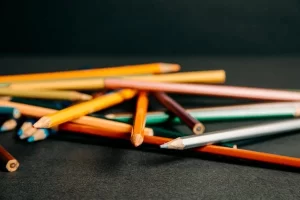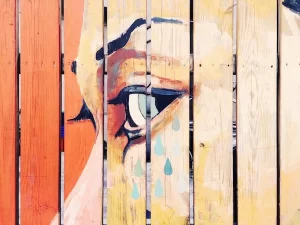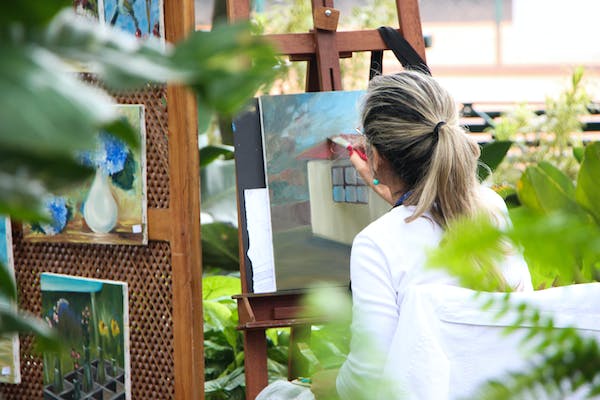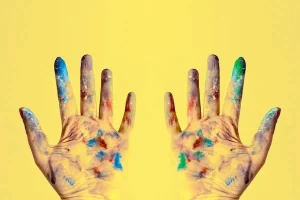The intersection of creativity and addiction is a complex and often misunderstood aspect of artistic expression. While artistry can be a source of inspiration and solace, it can also be fraught with challenges, especially for those grappling with addiction. Let’s delve into the struggles faced by artists navigating the intricate relationship between creativity and addiction.
 For many artists, creativity is inseparable from their identity. It serves as a means of self-expression, allowing them to channel their emotions, experiences, and perspectives into their work. However, the same qualities that fuel their artistic endeavors can also predispose them to addiction. The intense emotional highs and lows that accompany the creative process can become overwhelming, leading some artists to seek refuge in substances as a means of coping.
For many artists, creativity is inseparable from their identity. It serves as a means of self-expression, allowing them to channel their emotions, experiences, and perspectives into their work. However, the same qualities that fuel their artistic endeavors can also predispose them to addiction. The intense emotional highs and lows that accompany the creative process can become overwhelming, leading some artists to seek refuge in substances as a means of coping.
The allure of substances is particularly potent for artists who may perceive them as a gateway to enhanced creativity or a means of escaping the pressures of their craft. This perception, coupled with the romanticization of the tortured artist archetype in popular culture, can contribute to a normalization of substance use within artistic circles. As a result, many artists find themselves caught in a cycle of substance abuse, grappling with its detrimental effects on their health, relationships, and artistic output.
Moreover, the nature of the artistic lifestyle itself can exacerbate the risk of addiction. Irregular schedules, financial instability, and the pressures of the industry can create fertile ground for substance misuse. Additionally, the social environments prevalent in artistic communities may facilitate easy access to substances and normalize their use, further entrenching addictive behaviors.
Despite the pervasive challenges, it’s essential to recognize that addiction is not an inherent aspect of creativity. Many artists successfully navigate their craft without succumbing to substance abuse, and recovery is possible for those struggling with addiction. However, addressing the root causes of addiction within the artistic community requires a multifaceted approach.
First and foremost, there needs to be greater awareness and destigmatization of addiction within artistic circles. Open and honest conversations about the challenges artists face, as well as the resources available for support and treatment, can help break down barriers to seeking help. Promoting a culture of self-care and resilience within the artistic community is also crucial, emphasizing the importance of prioritizing mental and emotional well-being.
Furthermore, providing accessible and tailored support services for artists struggling with addiction is essential. This may include specialized treatment programs that address the unique needs and challenges of creatives, as well as initiatives aimed at promoting holistic wellness and harm reduction.
Ultimately, addressing the struggles of creativity and addiction among artists requires a collective effort from the artistic community, support networks, and society at large. By fostering a culture of understanding, compassion, and support, we can help artists navigate the complexities of their craft while promoting health, resilience, and artistic fulfillment.
 Artistic expression is a multifaceted phenomenon that transcends conventional boundaries and defies standardization. From the rhythmic strokes of a painter’s brush to the melodic cadence of a poet’s verse, each artistic medium has its tempo—a unique rhythm that reflects the artist’s vision, emotions, and creative impulses. In this article, we delve into the distinctive tempo of artistic expression and explore how it shapes the creative process across various disciplines.
Artistic expression is a multifaceted phenomenon that transcends conventional boundaries and defies standardization. From the rhythmic strokes of a painter’s brush to the melodic cadence of a poet’s verse, each artistic medium has its tempo—a unique rhythm that reflects the artist’s vision, emotions, and creative impulses. In this article, we delve into the distinctive tempo of artistic expression and explore how it shapes the creative process across various disciplines. The world of art is a vibrant tapestry woven with the threads of individuality, creativity, and the courage to defy norms. Artists, by their very nature, tend to march to a different beat, crafting their unique rhythms that resonate with the echoes of their personal narratives. In this article, we embark on an exploration of the artistic journey, delving into why creatives often choose the path less trodden, forging their own distinctive cadence.
The world of art is a vibrant tapestry woven with the threads of individuality, creativity, and the courage to defy norms. Artists, by their very nature, tend to march to a different beat, crafting their unique rhythms that resonate with the echoes of their personal narratives. In this article, we embark on an exploration of the artistic journey, delving into why creatives often choose the path less trodden, forging their own distinctive cadence. The artist’s lifestyle usually revolves around their work and creative processes. This could include staying up late, turning off late-night alarms and creating a working environment that works for them. They may live in places that inspire them, such as a cabin in the woods or a city loft, but they may also live in whatever suits their lifestyle and budget best.
The artist’s lifestyle usually revolves around their work and creative processes. This could include staying up late, turning off late-night alarms and creating a working environment that works for them. They may live in places that inspire them, such as a cabin in the woods or a city loft, but they may also live in whatever suits their lifestyle and budget best.


